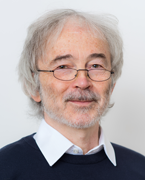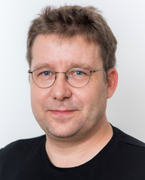

Cells need to adapt and fine-tune to varying environmental stimuli. Receptors in the plasma membrane translate chemical stimuli to changes in membrane potential or activation of signaling cascades. This module will offer an insight into different strategies to study the initial states of this process: the ligand binding an activation of the receptor. Often, receptors are multi-subunit proteins. This allows the emergence of cooperativity and thus a fine tuned sensitivity, which we will study here.
In the case of ligand-gated ion channels, also called ionotropic receptors, the controlling stimulus is the binding of ligand molecules to intracellular or extracellular binding sites of the channel protein. A standard approach to characterize their activation behavior in response to a ligand stimulus is the electrophysiological patch-clamp technique. Additionally, you will learn strategies to use fluorescently labeled ligands to follow receptor affinity and cooperativity, with fluorescence microscopy and confocal patch-clamp fluorometry (confocal PCF). In this method, we combine patch clamp and confocal microscopy to simultaneously study ligand binding and channel activation.
For metabotropic receptors, the activation is monitored by following conformational changes with FRET between to fluorophores engineered into the receptor.
Finally, you will learn strategies to generate quantitative models from the obtained data and draw conclusion on receptor cooperativity.

A) Scheme of a patch-clamp setup. The illustration shows the inside-out configuration with a glass pipette containing a membran patch excised from a Xenopus laevis oocyte.
B) Confocal image of a patch-pipette with an excised membrane patch expressing a high density of CNGA2 channels. The green fluorescence signal is due to the binding of fluroescently labelled cGMP molecules to the ion channels’ binding sites.

